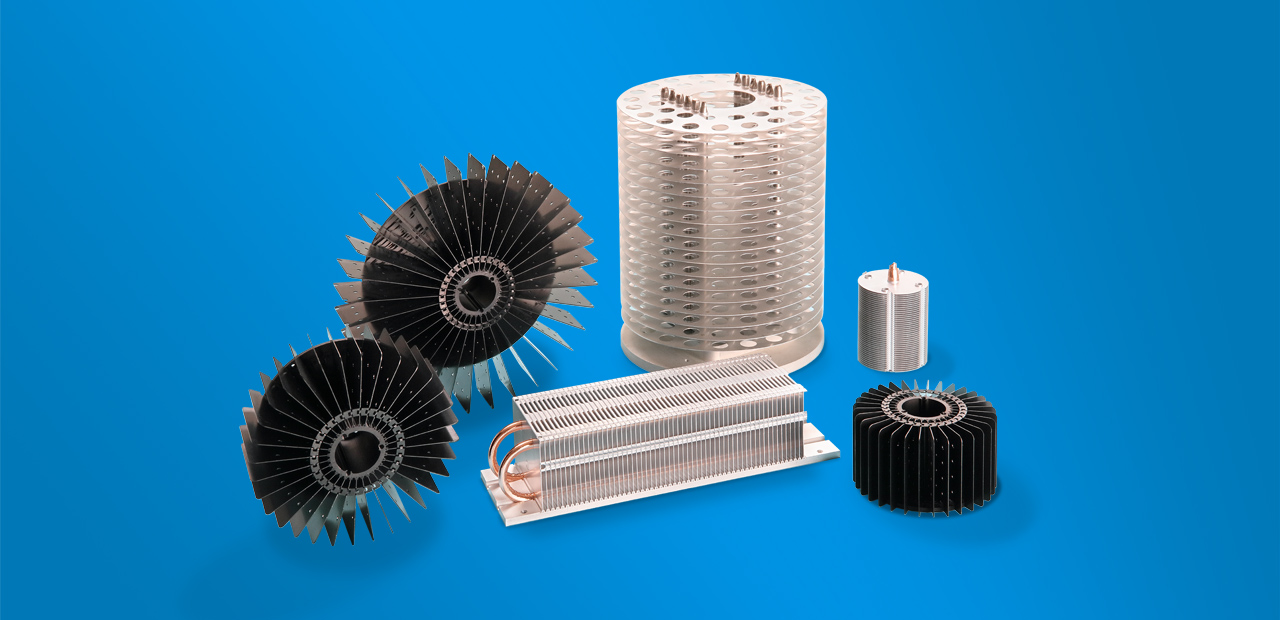Vacuum-Brazed Cold Plates
Vacuum-brazed cold plates are created by machining two metal plates with interior channels and fin structures (often folded fins and skived fins), which are then carefully sealed together inside a vacuum chamber. A filler metal with a lower melting point is melted into the joints of the cold plate via capillary action. The vacuum created in the chamber removes the atmosphere, thus preventing the forming of oxides that would normally form during the brazing process. Without the vacuum, a flux would be required to protect the joints as they are formed. The vacuum-brazing process creates an exceptionally strong joint and does not require any brazing flux.
The vacuum-brazed cold plate has unparalleled flexibility in its design, as it is not limited by the bending radius limitations of tube-embedded cold plates. Heat pipes can also be embedded in the plate to improve heat spreading capacity. Internal fin structures can be inserted inside the cold plate channels to increase the surface area in contact with the working fluid, providing greater heat transfer. As a result of this, vacuum-brazed cold plates are the liquid-cooling thermal module of choice for power generation, fuel cell components, electric car batteries, and various military, medical and avionics applications. Vacuum brazing has higher cost, but also very high reliability and produces very clean joints. It is also possible to do batch processing of large numbers of cold plates.
Novark creates its vacuum-brazed cold plates from aluminum, on an OEM (Original Equipment Manufacturer) basis. The table below is Novark’s vacuum brazing furnace volume.
| Furnace Length | Furnace Width | Furnace Height |
|---|---|---|
| 1500 mm | 800 mm | 800 mm |

